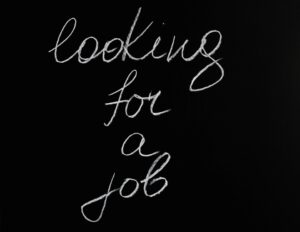New research by leading flexible workspace platform, Hubble, reveals that businesses still haven’t ‘solved’ workspace, years after the post-lockdown working shakeup. A survey of 200 leaders found that 88% of CEOs want employees in the office more; two thirds planning changes to their workspace setup in the next 12 months.
Hubble reveals that businesses are still struggling to make their workspace work for their organisation. The survey of CEOs and leaders across HR, Operations and Workspace, provides deep insights into the preferences and future plans of business leaders as they navigate the evolving workspace landscape.
Key findings show that CEOs want their employees in the office:
– Only half (50.2%) of leaders describe themselves as being ‘satisfied’ with their company’s current workspace setup.
– Over 2/3rds of leaders (68.7%) are planning to make changes to their workspace strategy in the next 12 months.
– Nearly 2/3rds of CEOs (65.2%) want employees in the office more – with CEOs the most likely to feel this way (87.5%).
– Two days a week is the most popular option for those planning to mandate staff back to the office.
Half of leaders are not satisfied with their workspace strategy – with a fully office-based strategy being the least popular.
Of the leaders surveyed, companies with a remote workspace strategy were the most likely to report being satisfied with their setup (57.4%), while those who are fully office-based were the least (43.8%).
And when it comes to hybrid setups, satisfaction levels depended on the type of hybrid working adopted – with ‘set office days per week’ being the most popular (51.4%), ‘employee choice’ second (47.7%) and a ‘set number of days’ the least (44.2%).
Businesses are still in ‘test and learn’ mode
Over 2/3rds of the businesses surveyed (68.7%) are planning on making a change to their workspace strategy in the next 12 months, suggesting that many companies are struggling to arrive at the best strategy for their team.
Of those planning a change, the most popular options were going fully remote with workspace provision for staff if needed (31.9%); then getting a smaller office (24.6%), with getting a larger office and going totally remote both the option of choice for 21.7% of companies.
Hubble CEO Tushar Agarwal comments, “The fact that leaders are struggling to arrive at a workspace setup that feels like it’s working shows that there’s no longer a one-size-fits-all solution anymore; it really is a question of trying different options and learning what’s best for your unique needs – whether that’s having your own office or using more flexible on-demand ways of working.”
Leaders are pining after more in-person working
The survey revealed a widespread desire from leaders for their team to come into the office more. Nearly 2/3rds of leaders (65.2%) expressed that they would personally like their teams to come in more.
CEOs were the most likely to want their staff to come into the office more (87.5%), with between 60% and 70% of HR, Operations and Workspace leaders also expressing this wish.
Of those considering mandating staff back to the office, the most popular number of days were: two days per week (30.3%), closely followed by three days per week (28.1%). Only 9% were considering mandating employees back full-time.
Tushar Agarwal comments, “The conversation about return-to-the-office mandates is a highly-charged one – workers have built their lives around increased flexibility and have now come to expect it.
“But at the same time, the power of in-person working is undeniable – and being around colleagues can have enormous benefits for personal development, productivity and happiness. I personally prefer the carrot and stick approach – creating an environment where employees feel incentivised to come to the office, and giving office days a sense of occasion.”
A lack of certainty on measuring the impact of workspace
The survey suggests that remote and hybrid work is still causing issues for businesses when it comes to teamwork, with just 49.3% of remote-first and 45.2% of hybrid leaders expressing satisfaction in their ability to communicate as a team.
Leaders were split on how the pandemic had affected their productivity as a company. While 31.3% said they were more productive now compared to before the pandemic, 37.8% disagreed, with the rest unsure.
They were also split on whether their employees were enjoying more job satisfaction, with 37.8% agreeing employees have more job satisfaction now, compared to before the pandemic and 34.8% disagreeing.
“I think the main message of this survey is that we’re still on a journey to ‘solving’ workspace post-pandemic,” says Agarwal. “The most important thing at a time like this is for businesses to have the flexibility to try out different approaches to workspace, without tying themselves into long-term leases or wasting their money paying for empty desks”.











